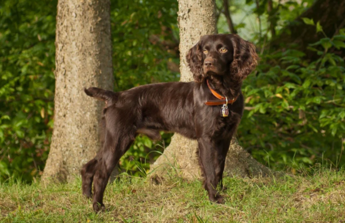The ancestor of the Labrador Retriever was the St. John’s Retriever, a smaller version of theNewfoundland. These dogs were brought to England, probably on fishing boats.
Gamekeepers crossed these Canadian imports with various breeds of gun dogs, always striving to improve the breed’s hunting and retrieving instincts. By the middle of the 19th century, the Labrador’s characteristic water-resistant coat and otter tail were already apparent.
By the late 1880s, the breed was sufficiently distinctive that “Labrador Retriever” became the generally accepted name of the breed. Originally black in color, the first recorded yellow Labrador appeared in a litter born in 1899. Chocolates were also recorded at about the same time, but never achieved the same level of popularity as the blacks and yellows.
Originally bred to retrieve from water, the modern Labrador Retriever has proven to be one of the most versatile breeds, excelling in hunt tests and field trials, in obedience and agility events, and also as service dogs.











